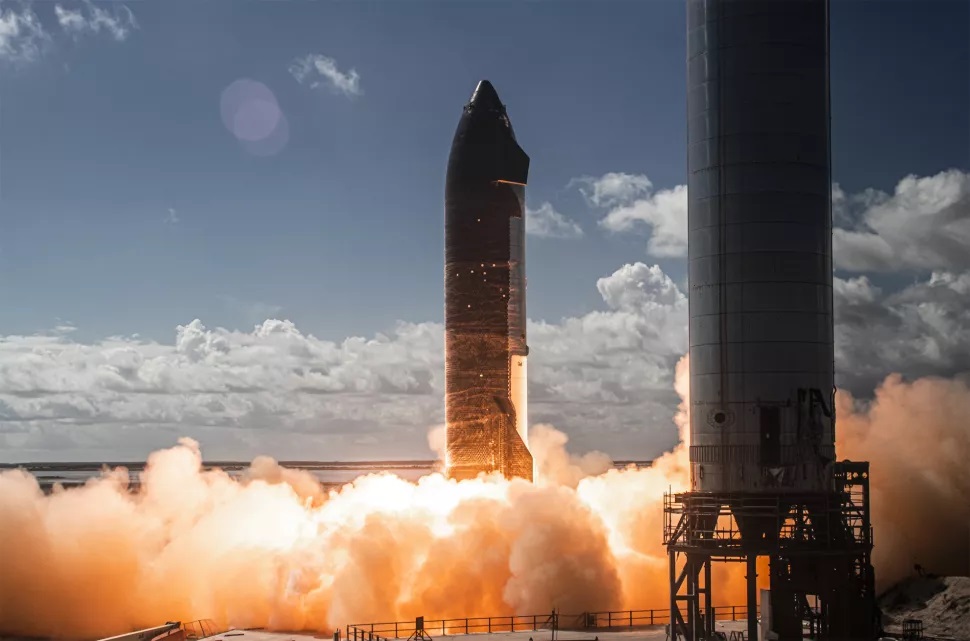Earth is in the midst of a climate crisis. Thanks to the way CO2 emissions have been rising rapidly since the early 20th century, global temperatures are rising, triggering a positive feedback cycle that threatens to make it worse. According to recent analyses, even if the industrialized nations agree to slash carbon emissions drastically, global warming will not begin to slow until mid-century. For this reason, emission reduction needs to be paired with carbon capture to ensure we avoid the worst-case scenarios.
Meanwhile, there is a significant outcry from the public concerning commercial space. Whereas advocates like Elon Musk argue that increasing access to space is key to our long-term survival, critics and detractors respond by stating that commercial space “steals focus” from Earth’s problems and that rocket launches produce excessive carbon emissions. In what could be a response to these challenges, Musk recently announced that SpaceX would be starting a carbon capture (CC) program to create propellants for his rockets.
The CC process begins with the removal of CO2 from the atmosphere through air scrubbers, absorption, chemical catalysts, or various other methods. The captured CO2 is then combined with water to create hydrocarbons (the basis of petroleum and natural gas); only the resulting biofuel produces less emissions. This “negative emission” technology not only reduces the level of CO2 in our atmosphere; it helps speed the transition to alternative fuels as well.
As usual, the announcement was made via Musk’s official Twitter account, where he wrote: “SpaceX is starting a program to take CO2 out of atmosphere & turn it into rocket fuel. Please join if interested.” Followed by, “Will also be important for Mars.” The latter tweet is somewhat self-explanatory, as it alludes to how this proposed carbon capture program could also be used to manufacture propellant on Mars.
On Mars, the atmosphere is predominantly composed of CO2 (95% by volume), making it a highly-favorable environment for CC and manufacturing biofuels. The ability to refuel the Starship beyond Earth is a crucial part of Musk’s long-term vision for “becoming interplanetary.” While the Starship will rely on orbital refueling to conduct missions to the Moon, Mars, and beyond, there need to be fuel depots at the other end so return trips can be made.
This is part of what will make the Starship a fully-reusable launch system remains, which is also crucial to SpaceX’s long-term plans. By reducing the associated costs of launches, SpaceX intends to establish a regular cadence of retrieve, refuel, and relaunch. In the past, Musk has said that he hopes to reach a capacity of 100 Starship launches a year every two years (when Earth and Mars are closest) to create his vision for a “self-sustaining city on Mars.”
Recently, there has been considerable buzz about how much carbon dioxide a single rocket launch produces. While some of this outcry is based on misinformation, an accurate account reported in the Guardian earlier this year indicated that a single launch (of a SpaceX Falcon 9) can leave 200 – 300 metric tons (220 to 330 U.S. tons) of CO2 in the atmosphere.

By committing to a carbon capture program, Musk has clearly listened to the growing concern of how regular launches could exacerbate climate change. Good thing too! When it comes to colonizing space, the key argument has always been that becoming an interplanetary species will ensure humanity’s survival. In addition to Musk, this argument has been made by such luminaries as Stephen Hawking, J. Richard Gott, and others.
There’s also the prospect of leveraging the abundant resources of space to meet the needs of Earth while simultaneously reducing the environmental impact we have on the planet. If the commercial space sector and its principal participants want to live up to these promises, they need to show that the proposed solution is not merely adding to the problem. In this respect, commercial space and carbon capture have something in common!


The outcry seems a bit misguided. Statistics of commercial airplane traffic tells me that it is ~30 M plane flights yearly, and with an average flight time of ~6 hours and 1.5 mt kerosene consumption per hour it burns through ~ 300 million mt kerosene yearly. Statistics of space traffic tells me that it is ~ 100 flights yearly, which for Falcon 9 with ~ 500 mt propellants will burn through ~ 300 mt fuel per launch or 30,000 mt kerosene yearly. (I’m assuming the denser CO2 eventually settle in the atmosphere, and Guardian and I seems to agree on mass use close enough.) There is a factor 10,000 fuel mass ratio between public airplane use and space industry use.
Even if Starship may close the gap by making reaching LEO 2-3 orders of magnitude cheaper, propellant CO2 airplane exhaust will continue to dominate. Though using the Sabatier reaction to recycle CO2 and H2O into the CH4 and O2 propellants is a good idea if we aim to replace kerosene airplanes with methane P2P Starship for intercontinental flights. And presumable smaller electric airplanes for the shorter flights, since liquid hydrogen airplanes becomes too bulky for the current airports.